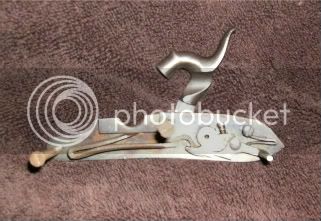KentuckyTAL
32 Cal.
- Joined
- Oct 22, 2011
- Messages
- 28
- Reaction score
- 2
I recently purchased Traditions Kentucky Rifle Kit, which had already been assembled.
I purchased it in the classified section of this forum.
I have a couple of questions about the trigger.
The trigger is very loose. It moves back and forth in the trigger guard.
Is this typical for this rifle, or is it possibly missing an internal part, or in need of some kind of adjustment?
Also, the trigger pull is extremely heavy!
Is this typical for this rifle, or is it an adjustment issue?
The trigger assembly is "safe". The half-cock position works, and the hammer can not be pushed forward by hand in the full-cock position.
Oh, the gun has a single trigger.
This is my first muzzleloader and I'm looking for some assistance.
Thank you,
Tim
I purchased it in the classified section of this forum.
I have a couple of questions about the trigger.
The trigger is very loose. It moves back and forth in the trigger guard.
Is this typical for this rifle, or is it possibly missing an internal part, or in need of some kind of adjustment?
Also, the trigger pull is extremely heavy!
Is this typical for this rifle, or is it an adjustment issue?
The trigger assembly is "safe". The half-cock position works, and the hammer can not be pushed forward by hand in the full-cock position.
Oh, the gun has a single trigger.
This is my first muzzleloader and I'm looking for some assistance.
Thank you,
Tim






